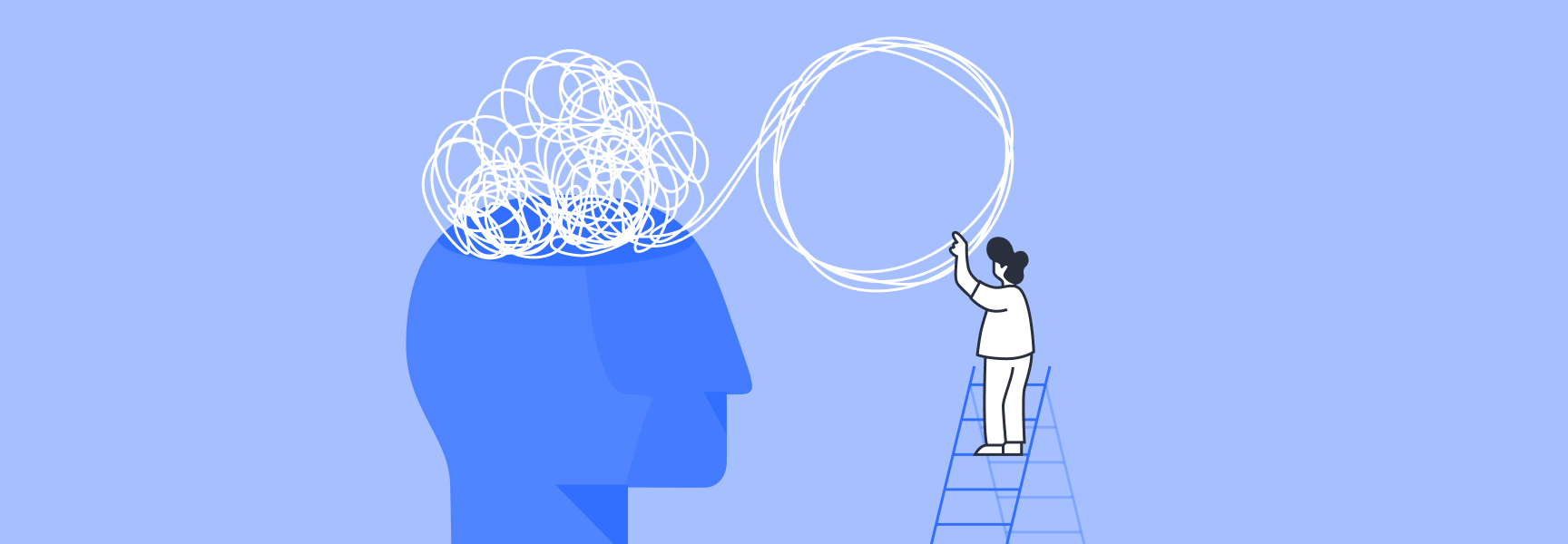
See all articles in the series: How to Get Organized at Work →
How the Right Mindset Can Improve Your Organization Skills
It’s something we all know: Mindset makes the difference between a good day and a bad day. So if you want to improve your organization skills, what’s the right mindset to have? And how do you get it?
We rounded up tips on how to get an organized mindset from the world’s top productivity experts. These tips can be tested in just one day — proving that small things can indeed make you feel more organized.
Take a picture of your day
You’ve heard of the KonMari organizing method for getting your home tidy. But here’s a KonMari tip you may not have heard yet: Take pictures of your mess.
“I’m not suggesting this to make you feel bad; by seeing your rooms objectively, you will be able to think ‘I want to change this that way’ and come up with specific solutions. These steps will increase your motivation to organize. And, you can use those pictures to compare before and after tidying and appreciate the difference.” – Marie Kondo
Since you can’t actually take a photo of your day, do the next best thing: Write it down. Note what you’re supposed to be doing during various parts of the day, and then write down what you actually did. How did you feel when you were off track? Stressed, anxious, distracted? Compare that to how you felt when you were in the zone.
This exercise will help you with the next step…
Identify your strong and weak times
Have you ever set out for a morning run, only to give up before you even hit your stride? What went wrong? If you’re like many of us, you skipped breakfast and were literally running on empty. It’s no wonder you had zero energy.
The same thing happens during our day. You might be a morning person, while others do their best work in the afternoon or even nighttime.
Look at the picture of your day and figure out the best and worst work times for you. Then be smart about it. Don’t try to do hard stuff during your weak times, and stop wasting your energy on easy tasks when you could be cruising through bigger problems.
Make a plan every day
Productivity expert Stephen Covey tells us, “Begin with the end in mind”. Okay, but how? If you’re prone to distraction, even the planning process can put you down the wrong mental path.
Alan Brown is a productivity coach who also has ADHD, so he knows the importance of simple, effective planning. Here’s his evidence-based approach to planning your day:
- Take 5 minutes — research shows it’s all you need.
- Choose 3 biggies (the important tasks you want to accomplish). Any more than that, and your chances of getting even one of them done goes down.
- Write it down in a notebook or planner. You don’t need anything fancy; in fact, overly detailed planners can be distracting and stressful.
Learn to recognize fake productivity
“I’m doing research!”, you tell yourself, as your mouse opens the next browser tab — and then the next, and the next. Pretty soon, you’re slumped over your computer (or your phone), lost in a sea of tabs that have nothing to do with your project.
If this sounds like addictive behavior, it is.
Designer Nicholas Kramer points out that many user interfaces of apps and websites are designed to trigger behavior that lights up our brain’s pleasure centers like a neon sign. He explains,
“We refresh app feeds in the hopes that we receive new information and content, much like how a slot machine either deals a jackpot or a bust.”
As Alan Brown puts it, “Our minds are powerfully attracted to things which do not move us forward. Our minds want to go to the thing that’s easier, the thing that feels like productivity but it’s not.”
That’s why it’s easy to open too many browser tabs…and why it feels oh-so-satisfying to delete emails, check notifications, and look at various metrics. Your brain thinks you’re getting stuff done. But at the end of the day, you didn’t make progress on what matters.
Don’t worry. There’s a simple trick to overcome fake productivity.
Guard your mind
Think of your mind as an open door. You need to be prepared for every thought or task that pops into your doorway, asking to be let in.
Here’s what you do, according to Alan Brown.
Label each thought that pops up, and be honest with yourself. Is it…
1. A distraction from what’s important?
Slap a no-soliciting sign on your door. That means you close the tab, throw away the post-it note, delete the app, or put the distracting device in the other room. Whatever’s necessary to guard your mind.
2. Important, but not right now?
Tell it to come back later. In practical terms, this might mean writing down your stray thought on a sticky note, or moving a browser tab to a more appropriate place.
3. What you’re doing right now?
This is the rarest and most obvious one. Typically, you know right away when you need to deal with something. Take care of it and then come back to your task.
Wondering if there’s a tool to make this easier? Workona is the simplest way to close distracting tabs, move them to the right project, and focus on what matters right now.



Embrace singletasking
It’s well established that multi-tasking actually sucks away your productivity instead of multiplying it.
So that leaves single tasking: doing one thing at a time, with no distractions, until it’s done.
As Buffer’s VP of Marketing Kevan Lee writes, “Single-tasking is not multitasking. It is not having dozens of browser tabs open at once, it is not checking email every 10 minutes, and it is not a perpetual chat window open on your desktop.” (Sound familiar?)
Some ideas to help you embrace singletasking:
- Open just the tabs you need, and close or hide the rest (Workona makes this incredibly simple).
- Try the Pomodoro technique: work for 25 minutes, then rest for 5. Even better if your rest takes the form of a physical stretch or walk, rather than scrolling through Instagram.
- Turn off notifications from Slack, email, and similar apps when you need to focus.
Remember the beautifully shaded penny
Sometimes your disorganization leads to underachieving. But just as often, it leads to overachieving the wrong things.
Pixar’s Ed Catmull shares the story of “the beautifully shaded penny” in his book Creativity, Inc. It’s a phenomenon that occurs when artists care so deeply about every detail that they’ll spend days or weeks crafting the equivalent of a penny on a nightstand that the viewer will never see.
“Clearly, something in our process had broken. The desire for quality had gone well beyond rationality.”
Why? Ed explains, “Because of the way production unfolded, our people had to work on scenes without knowing the context for them — so they overbuilt them just to be safe. Of course they knew there were limits. They just couldn’t see them.”
Getting organized is one of the best ways to see limits. Making a plan helps you identify what’s important, and guarding your mind keeps you from wandering onto the wrong path.
But some days, your tools are all wrong, you spilled your coffee, and your boss miscommunicated.
You’ve still got your mindset.
An organized mindset is your best fallback plan, and it’s all yours — no paperwork or manager approval necessary. When you decide to change your mindset, nothing can stop you. It’s game over for your distractions, and game on for your career.